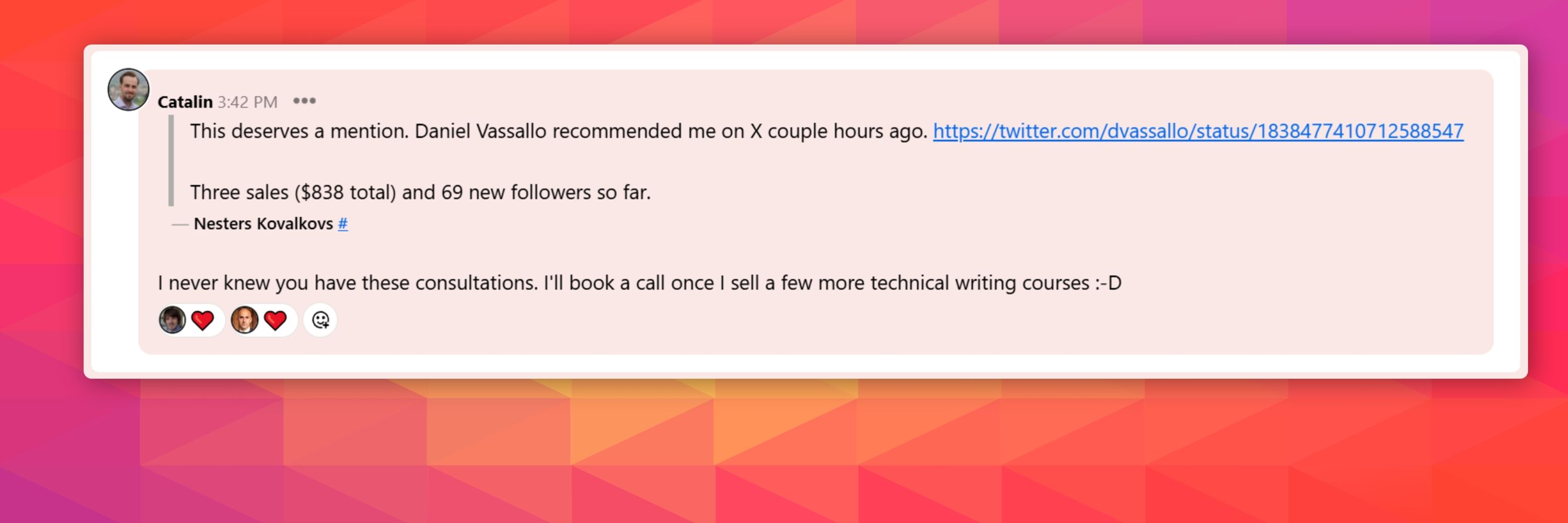
The host of The Weekly Yap by Small Bets (https://theweeklyyap.com)
Consultations / newsletter -> https://linktr.ee/nestersk
In this case:
- reviewed existing code and it had couple leftover scripts that were no longer used but still parsed and executed - REMOVED
- moved some styling/script files to inline - they were small
- small changes to defer couple scripts
In this case:
- reviewed existing code and it had couple leftover scripts that were no longer used but still parsed and executed - REMOVED
- moved some styling/script files to inline - they were small
- small changes to defer couple scripts
Links:
(1) Lighthouse score calculator: googlechrome.github.io/lighthouse/s...
(2) Chart showcasing awarded score weight vs. absolute performance score in a metric (diminishing returns):
t.co/j6QjSRvRn0
Links:
(1) Lighthouse score calculator: googlechrome.github.io/lighthouse/s...
(2) Chart showcasing awarded score weight vs. absolute performance score in a metric (diminishing returns):
t.co/j6QjSRvRn0
It can provide some guidance for user experience, sure, but that might not have any impact on SEO.
It can provide some guidance for user experience, sure, but that might not have any impact on SEO.
5. Evaluating introduction of 3rd party tools - whether it's a live chat client, user tracking for analytics - they all leave negative impact on performance
5. Evaluating introduction of 3rd party tools - whether it's a live chat client, user tracking for analytics - they all leave negative impact on performance
Common use cases
1. Debugging performance issues - run it during development to identify bottlenecks
2. Automated testing in CI/CD pipelines - maintain quality standards by running it as part of your development workflow
Common use cases
1. Debugging performance issues - run it during development to identify bottlenecks
2. Automated testing in CI/CD pipelines - maintain quality standards by running it as part of your development workflow
- different network conditions (including throttling)
- different device performance (and/or throttling)
- cache vs. no-cache
- different pages on the website
Every single variable here can severely impact the score you'll get as part of the lab test.
- different network conditions (including throttling)
- different device performance (and/or throttling)
- cache vs. no-cache
- different pages on the website
Every single variable here can severely impact the score you'll get as part of the lab test.
Simulated nature of the test
Now that you understand how the score is calculated - there's another issue - it's a simulated 'lab test'.
No two scores are the same.
Simulated nature of the test
Now that you understand how the score is calculated - there's another issue - it's a simulated 'lab test'.
No two scores are the same.
In real life, when you're trying to squeeze the very last bit out of everything - you hit physical limits - the performance of your hardware, bandwidth of your internet connection, the responsiveness of your server etc.
In real life, when you're trying to squeeze the very last bit out of everything - you hit physical limits - the performance of your hardware, bandwidth of your internet connection, the responsiveness of your server etc.
And that's only 'metric improvement' - the absolute change in a value.
And that's only 'metric improvement' - the absolute change in a value.
Well, it's the same with Google Lighthouse.
Well, it's the same with Google Lighthouse.
And when you're aiming for that perfect 100 - you will hit the beautiful wall of diminishing returns.
And when you're aiming for that perfect 100 - you will hit the beautiful wall of diminishing returns.
Let's look at what these metrics are, and their respective weight in the scoring:
Total Blocking Time (TBT) - 30%
Largest Contentful Paint (LCP) - 25%
Cumulative Layout Shift (CLS) - 25%
Speed Index (SI) - 10%
First Contentful Paint (FCP) - 10%
Let's look at what these metrics are, and their respective weight in the scoring:
Total Blocking Time (TBT) - 30%
Largest Contentful Paint (LCP) - 25%
Cumulative Layout Shift (CLS) - 25%
Speed Index (SI) - 10%
First Contentful Paint (FCP) - 10%
The score calculation
The Lighthouse score is a weighted average of five key performance metrics that Chrome collects and evaluates during a page load.
So you have these 5 metrics, and each contributes a portion of the score.
The score calculation
The Lighthouse score is a weighted average of five key performance metrics that Chrome collects and evaluates during a page load.
So you have these 5 metrics, and each contributes a portion of the score.
To truly make use of the tool and these reports - you will need more understanding on what each of these metrics mean, and how they can be optimized.
This is what I will focus on in future posts.
To truly make use of the tool and these reports - you will need more understanding on what each of these metrics mean, and how they can be optimized.
This is what I will focus on in future posts.

